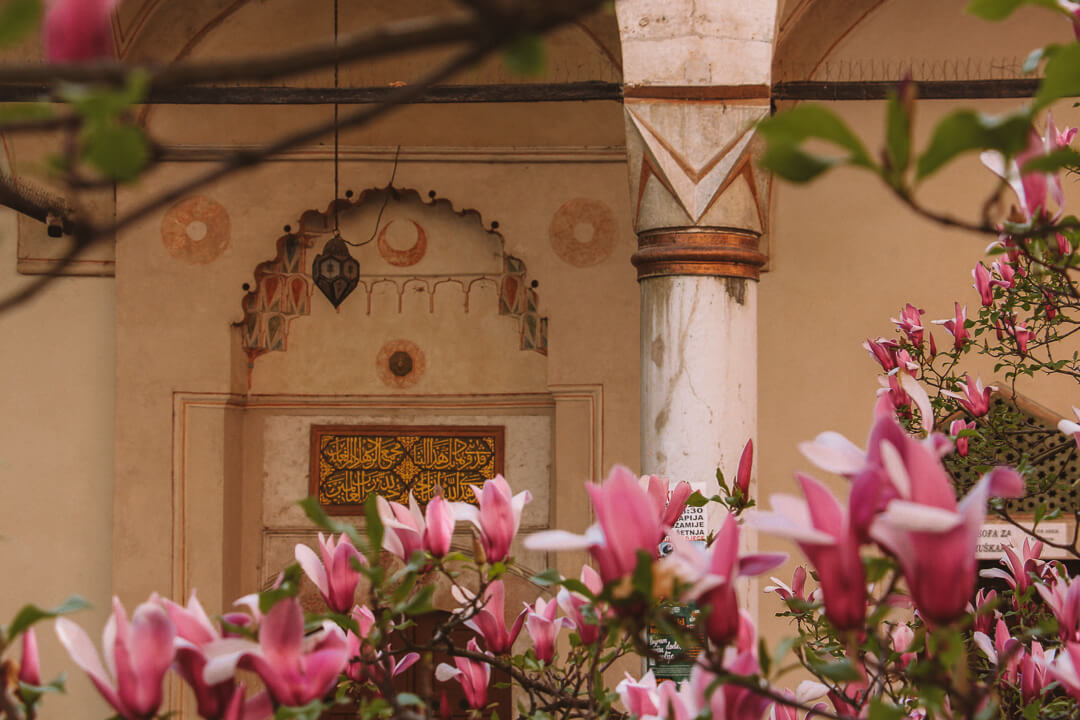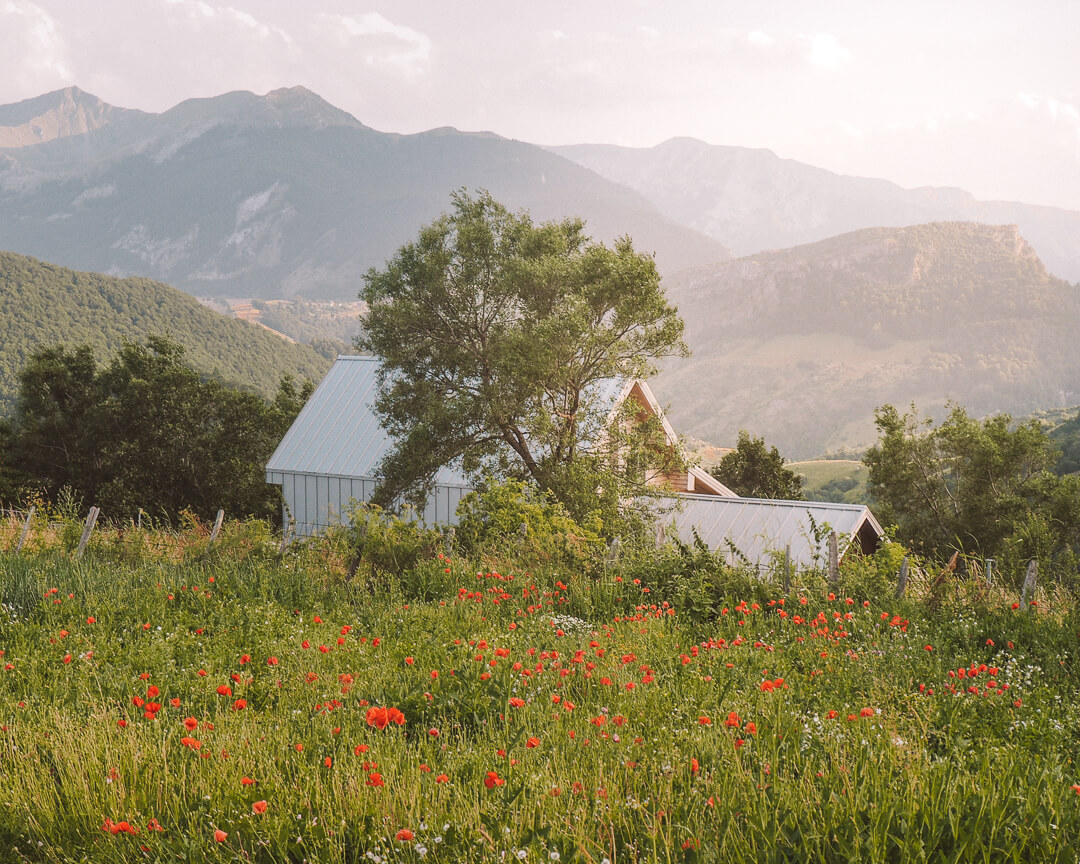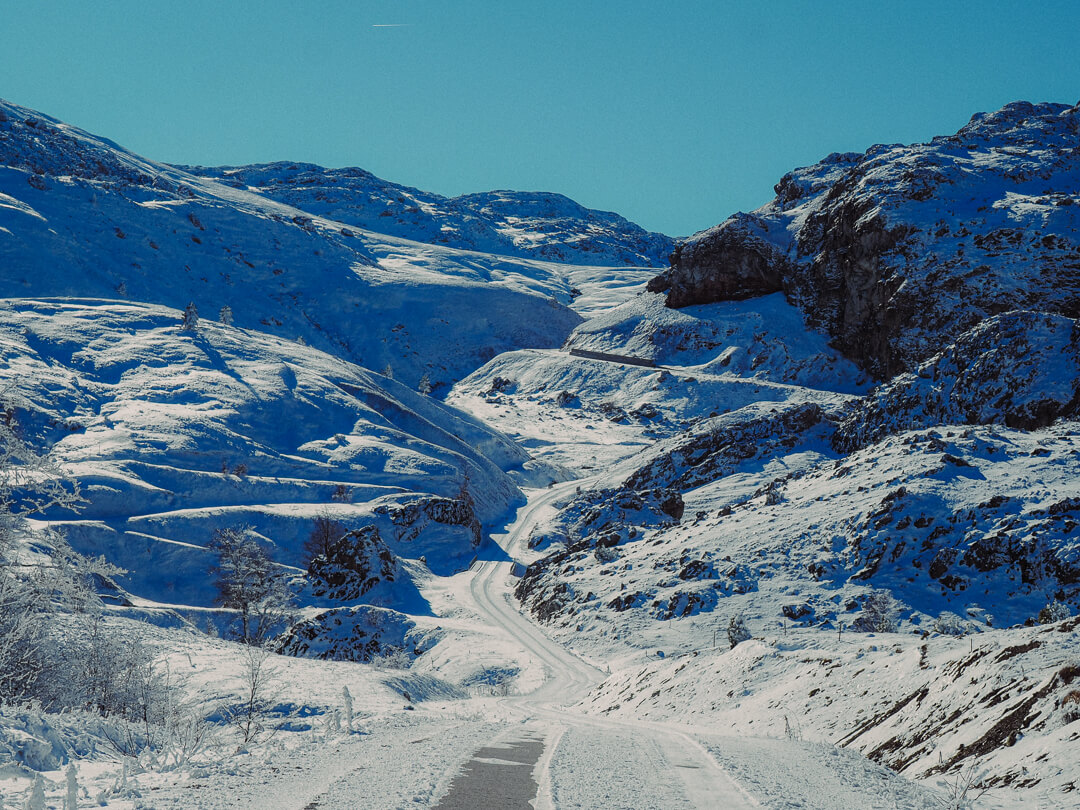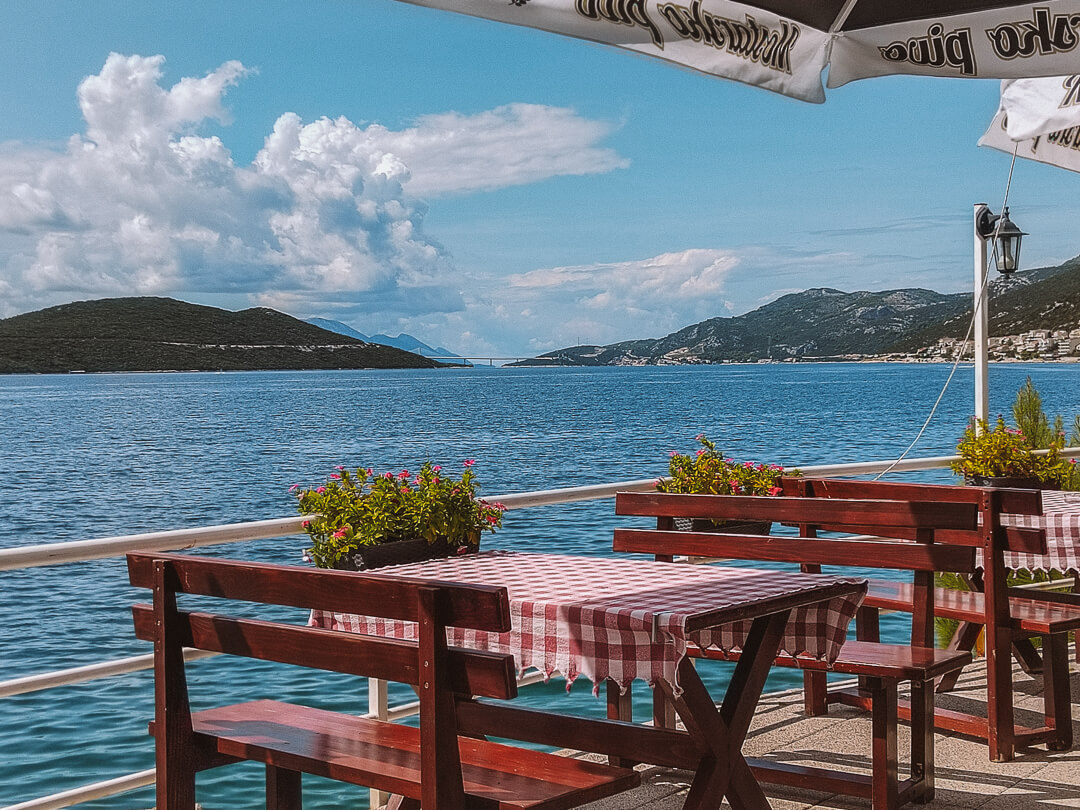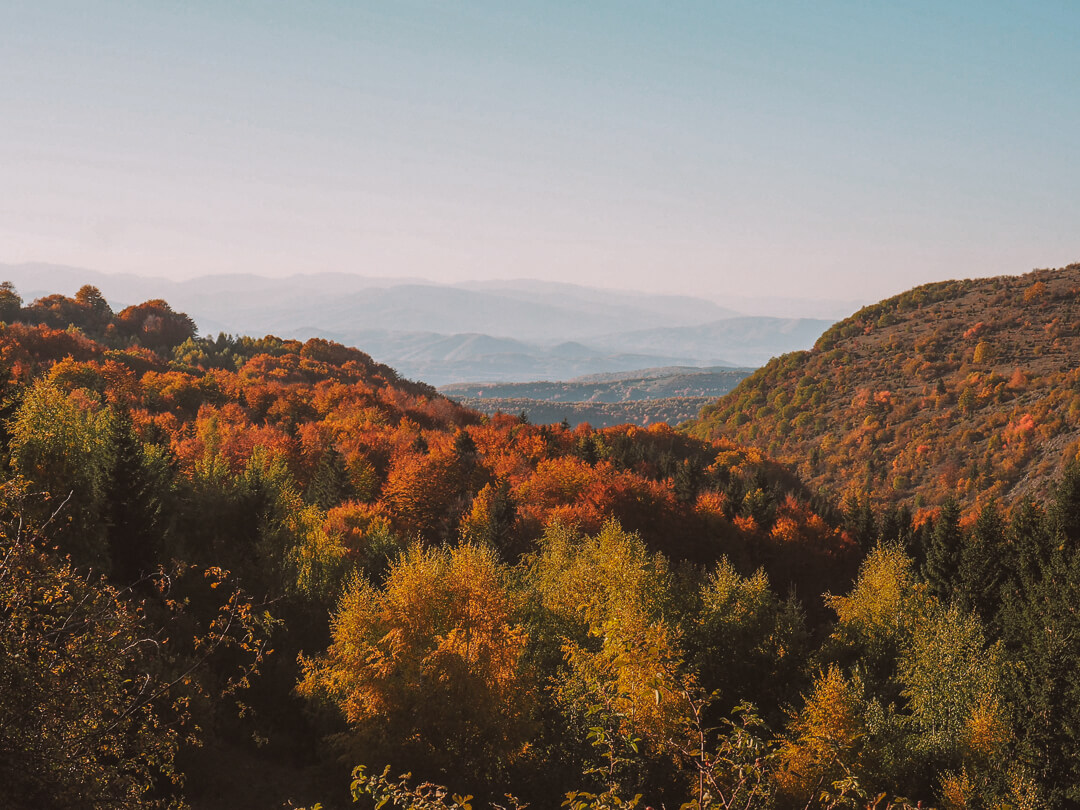1. PITA – THE GREASY, CRISPY NATIONAL PASTRY
Every country has its own version of fast food. And in Bosnia and Herzegovina it is pita. Bosnians love this greasy, flaky snack at any time of the day. And no, pita is not pita bread!
Pita is made from a type of puff pastry and various fillings. The most common types are burek (filled with minced meat, usually beef) and vegetarian variants: sirnica (filled with cheese), krompiruša (filled with potatoes) and zeljanica (filled with spinach).
Pita is a hearty meal and is often eaten with yogurt. You can buy it in bakeries (pekara) or in buregdzinicas where they bake fresh filo dough pastries throughout the whole day.

2. ĆEVAPČIĆI – THE FAMOUS MINCED MEAT SAUSAGES
Ćevapčići (sometimes shortened to Cevapi) are THE national dish of Bosnia and Herzegovina and hugely popular. They are prepared differently in every part of the country. There is Ćevapčići from Travnik, Ćevapčići from Banja Luka and Ćevapčići from Sarajevo.
In Sarajevo, minced meat sausages are traditionally made from veal and served in flatbread called somun and with kajmak, a type of sour cream.
They taste best in a Ćevapdzinica, a shop that focuses solely on preparing this speciality. Here, freshly grilled food is available throughout the day.
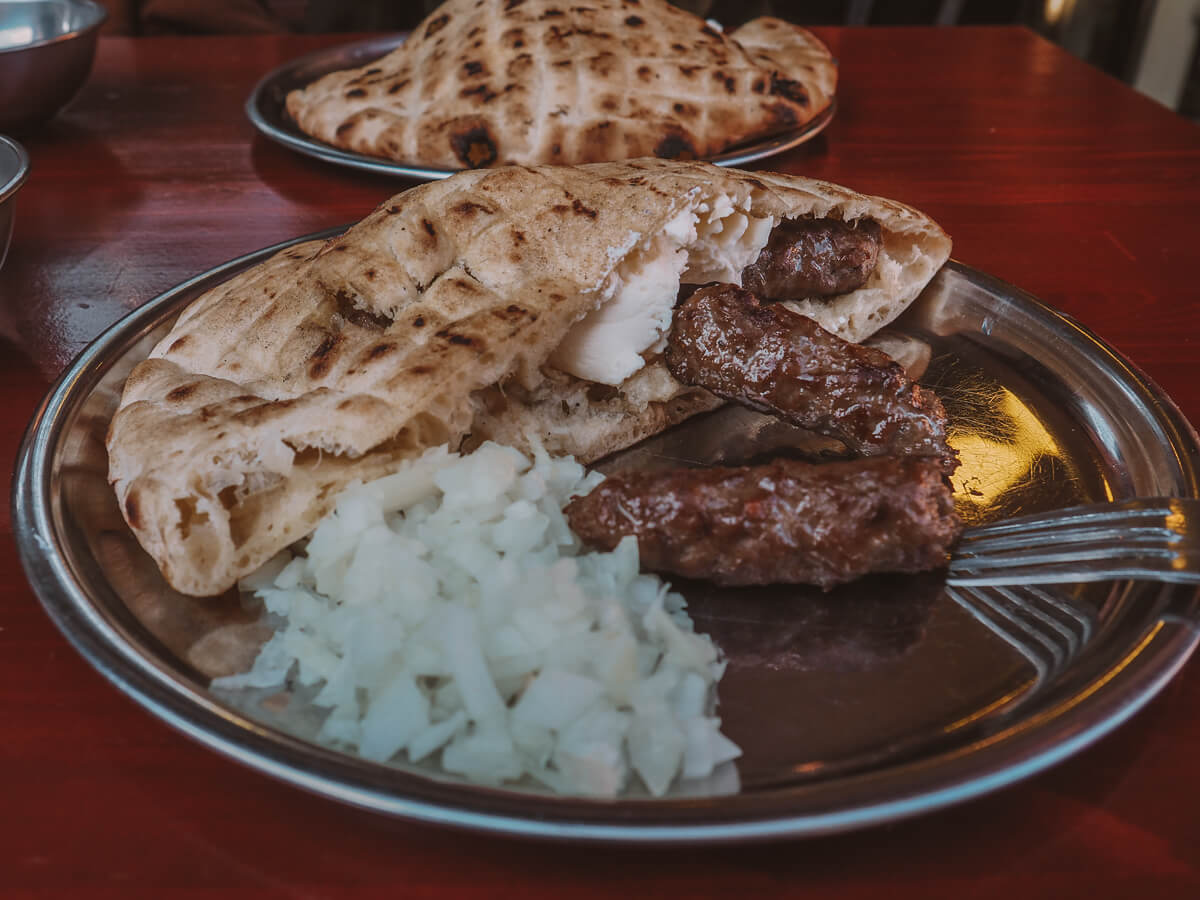
3. DOLMAS – COOKED COMFORT FOOD
In Bosnia and Herzegovina and throughout the Balkan cuisine, a variety of vegetables whose main ingredient for the stuffing is ground beef and rice: bell peppers, tomatoes, zucchini or onions and even sauerkraut. In all Balkan countries you will find dolma, the stuffed vegetable.
In Bosnia and Herzegovina, they are sold in aščinicas – traditional Bosnian restaurants that serve stews, soups and stuffed vegetables. Whatever has been prepared for the day is only available in the aščinica until it is sold out. Most locals have a quick lunch here.
Here you will not only find dolmas, but also a selection of boiled and cooked meat dishes such as goulash or paprikaš. Soups such as the Bosnian bean soup Grah or the famous Begova Čorba with okra are also served here – in short, everything that is soul food.
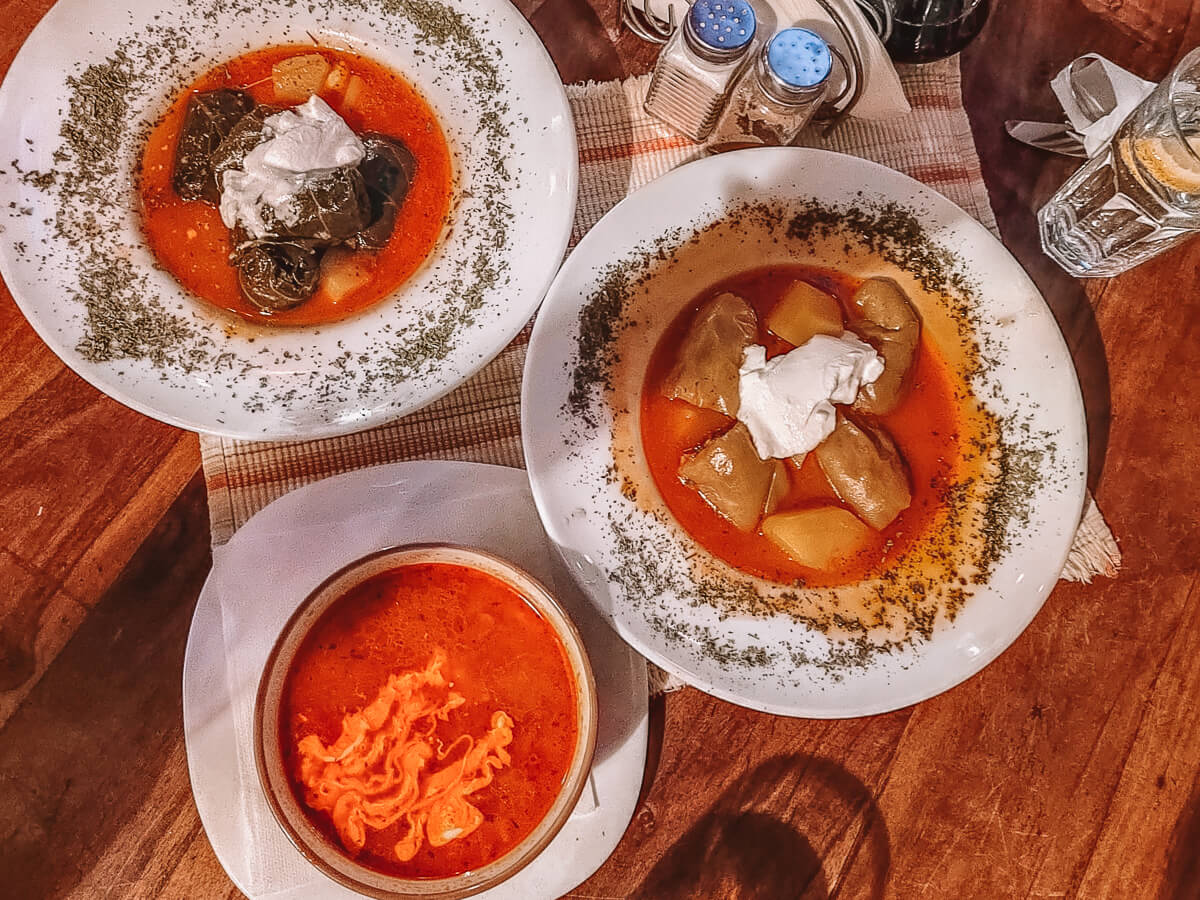
4. GRILLED FOOD – THE BOSNIAN NATIONAL SPORT
Grilling is almost a national sport in Bosnia and Herzegovina. There is a unique tool here for making dishes particularly juicy and tender: the sač, a large metal lid in the shape of a bell under which various dishes are prepared. Hot coals are placed on the bell and ensure that the dishes prepared in the sač are cooked at an even temperature and retain their juiciness and flavor. Would you like to make a sač yourself? Then spend an afternoon in our family garden!
Around Jablanica, lamb on a skewer is also a real delicacy. Traditional dishes in Bosnia and Herzegovina are often regional – and here in and around Lake Jablanica you can find the best.
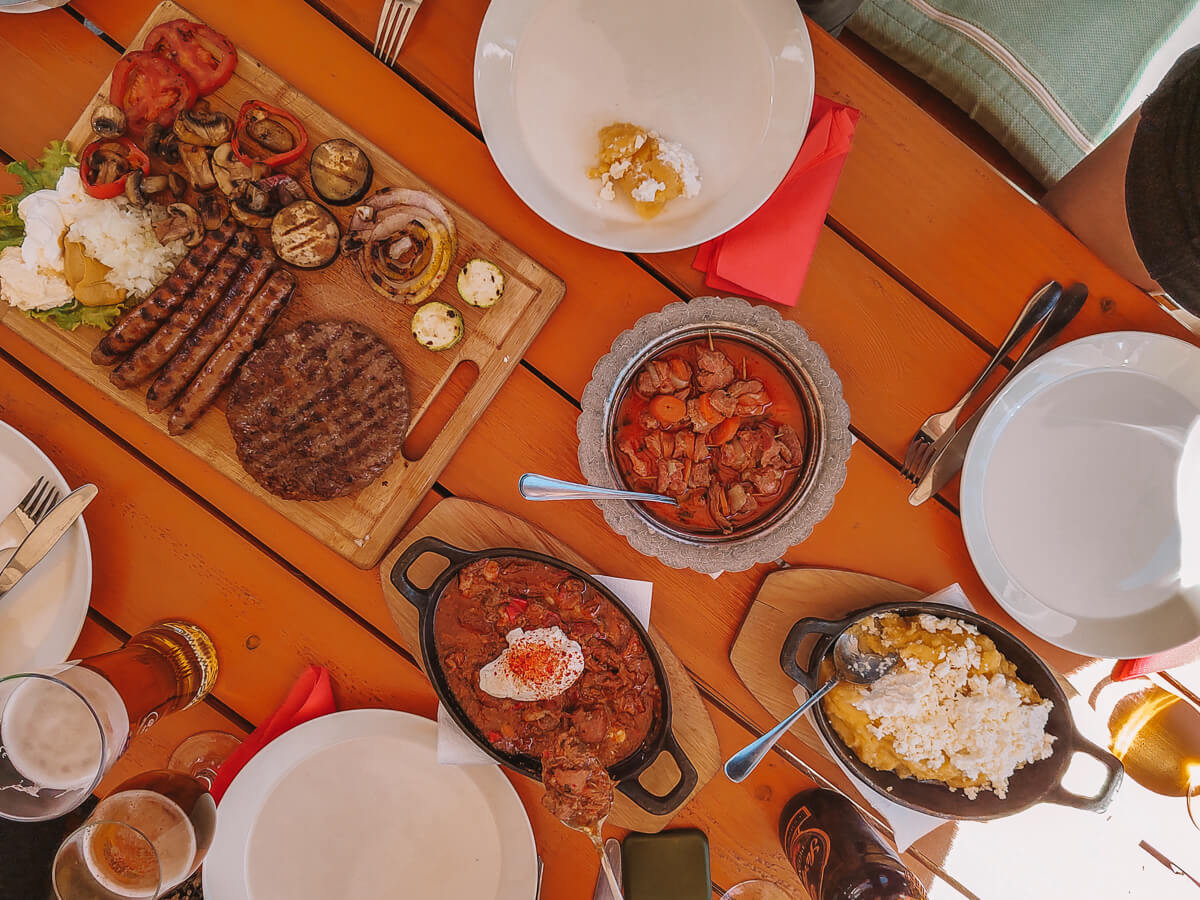
5. KLEPE – BOSNIAN DUMPLINGS
You will find this traditional Bosnian dish, a Bosnian version of ravioli, in many traditional restaurants – it is one of the traditional dishes that is still cooked a lot in Bosnian households. As with pita and burek, of course, every Bosnian housewife has her own recipe.
In general, Bosnian ravioli are often prepared and eaten with sour cream and lots of garlic or a kind of paprika sauce.
6. BOSANSKI LONAC – THE DISH FROM THE MIDDLE AGES
This Bosnian pot made from a variety of meats dates back to the time of the Bosnian Kingdom. Depending on the region, beef, lamb, game or a mixture of all of these is used, as well as different vegetables. Everything is layered, poured with water and then cooked until the meat is very tender, and the vegetables are cooked. This old dish is no longer on the menu everywhere, but if you get the chance, you should try it.
7. MEZZE – THE BEST SAUSAGES AND CHEESES
As is common in Mediterranean cuisine, there are often mixed starters to share: Ajvar, various types of cheese, and various types of sausage such as the beef ham Suho Meso are served before the main course. The Bosnian version of antipasti, so to speak.
Each region has its own types of ham and sausage, often made from pork in Herzegovina and Mostar, and beef in the Muslim parts of the country. Almost every region also has its own type of cheese. The cheese from Travnik or Livno is particularly well-known.

8. BAKLAVA – SWEET AND IRRESISTIBLE
The influence of the Ottoman Empire is often still visible here in Bosnia and Herzegovina, especially in the sugary desserts. And Bosnians love sweets. There is also baklava here – although it is not made with pistachios, but with walnuts and soaked in sugar syrup.
You will find this sweet puff pastry all over the Balkans, including Montenegro, North Macedonia and Serbia.
9. TUFAHIJA – THE “BAKED APPLE BOSNIAN STYLE”
Another typical Bosnian dessert is tufahija – an apple filled with walnuts, covered with syrup and served with whipped cream in a large glass.

AND WHAT DO PEOPLE DRINK IN BOSNIA?
Bosnians love coffee – it is drunk here in the country at any time of the day or night. Black and bitter, with sugar and a little sweet on the side. On our city tour you can learn how Bosnian coffee is prepared and drunk and why it’s not the same as Turkish coffee.
And if you want something alcoholic, then of course Rakija is popular in Bosnia and throughout the Balkans. The notorious fruit brandy, often made from plums (Šlivovica), but also from quince, apple, apricot or pear. But please note: Rakija is not a shot, but is drunk sip by sip. A glass of water is always ready at the side. Do you want to learn more about Rakija? Book a Rakija tour with us and taste different varieties!
We hope this post has made you want to try Bosnian food and Bosnian cuisine! Check out our foodie tours and book a cooking class, barbecue, food tour or rakija tasting!

